Should I use a golf trolley? How to decide if it’s time to ditch the straps for good
Last updated:
Today’s Golfer breaks down the key considerations for those contemplating taking some weight off their shoulders and wheeling out the golf trolley.
Full disclosure. I’m still struggling to get on board with the air fryer craze sweeping across the planet. I appreciate it cooks things a bit faster, but as for being healthier and more cost-effective, I want to see a bit more evidence before making a big investment for the sake of saving a few more Netflix minutes on a Thursday evening.
It’s probably no surprise then that I feel the same way about golf trolleys. I don’t doubt I’ll likely feel fresher after 18 holes and would enjoy the convenience of all the latest caddie-esque mod-cons on board the best golf trolleys, but what would I be saying about myself if carrying an extra 10 kg on my back was too arduous in my 30s?
Anyway, that’s me – a bit odd. I am trying to embrace change though, and what better place to start than challenging my preconceived ideas about transporting metal sticks around a field? To help me get to an informed final verdict, I’ve discussed four relevant areas: health & injury, golf performance, function & practicality, and cost. But before diving in, let’s get a lay of the land in the world of golf trolleys.
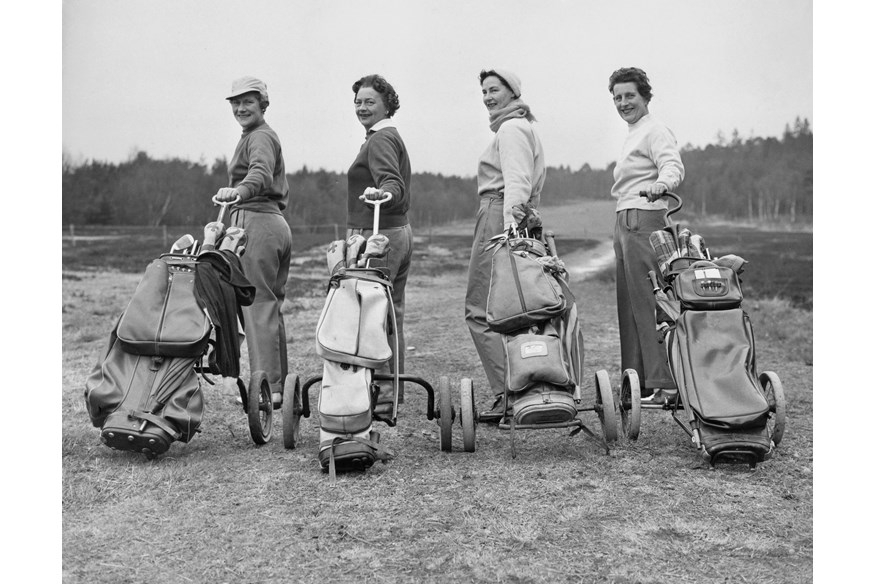
Push, pull, or press…what’s the difference?
Golf trolleys have come a long way in 70 years and are categorized into push and electric, with the latter incorporating remote-controlled and follow models. Trolleys that manually need to be pushed or pulled still hold their own in the marketplace and are a popular halfway house for those looking for lightweight simplicity without needing to worry about charging batteries. If you are sat on the fence, then one of the shortlisted models in our best push trolleys guide is perhaps a good place to start so you can give your back a taste of the future before making the heftier outlay on a motorized version.
I imagine however, that if you are asking the central question here of whether you should use a golf trolley, you have already had your head turned a few times by the electrical wizardry buzzing about the fairways. These heavier, more expensive battery-powered models are controlled via the press of a button or will even follow your footsteps like a well-behaved dog. Depending on which mode of operation appeals most, you’ll be able to whittle down your options pretty quickly and find the electric trolley of your dreams.
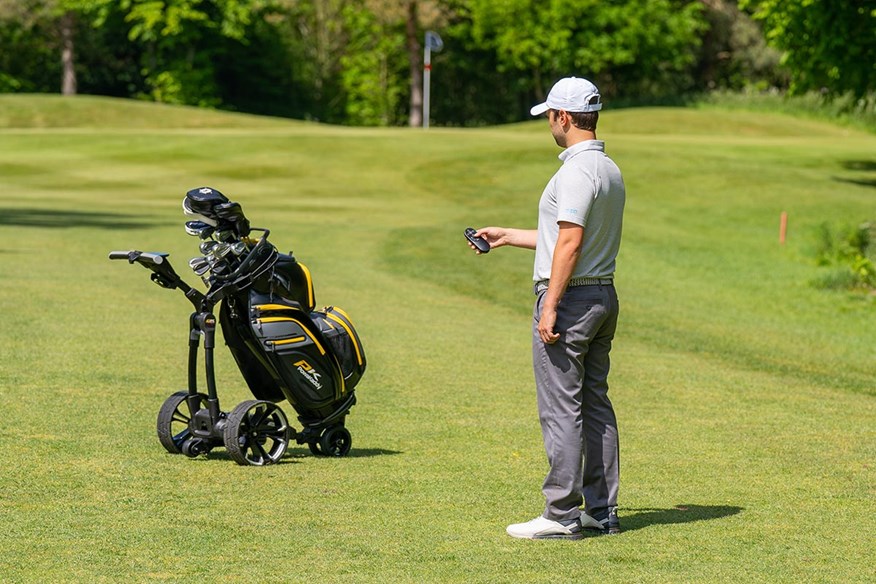
Health & Injury
One potential limitation to adopting a golf trolley is the perceived loss of health benefits that many golfers feel they receive through carrying their clubs. Is this actually the case though? Today’s Golfer recently spoke with Prof Graeme Close from Liverpool John Moore’s University who published one of the most comprehensive studies into the energy expenditure of different modes of golf club transportation.
In Prof Close’s study, published in the European Journal of Sports Sciences (Kasper et al., 2023), 16 highly skilled golfers were shown to expend the same amount of energy regardless of how they transported their clubs around the course. Observed differences in activity energy expenditure across 18 holes were shown to be negligible when comparing carrying clubs (688 kcal), to using a push trolley (756 kcal), to using an electric trolley (663 kcal).
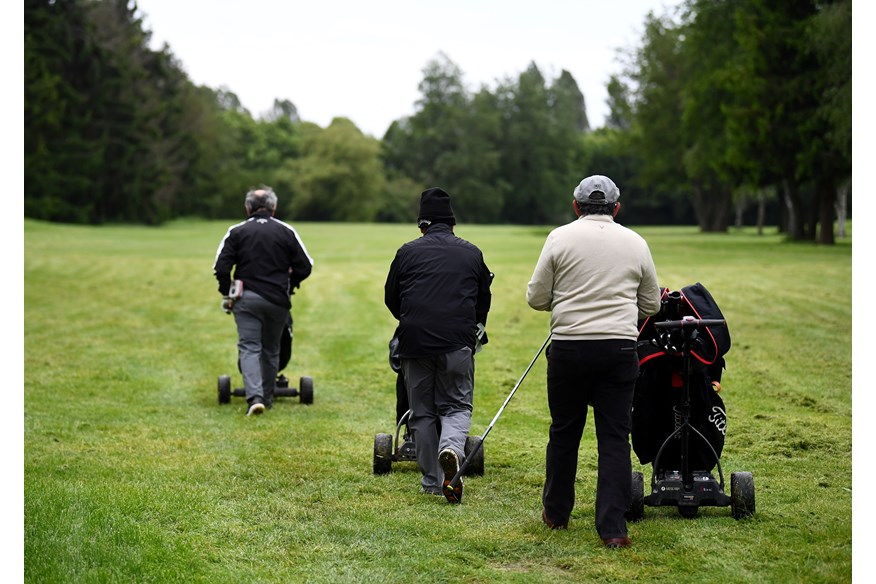
While this study had its limitations, as with all science, it’s an interesting finding that will undoubtedly surprise many who thought soldiering on with clubs mounted to their back was a significantly better mechanism for burning calories. One non-negotiable result that we can all attest to, however, was that the high-level golfers used in the study all perceived carrying golf clubs to be far more arduous than wheeling them.
The increased risk of injury from carrying golf clubs is also more nuanced than perhaps thought. If you lift any weight with a careless technique you put yourself at greater risk of injury, and if you don’t have sufficient strength to lift and lower 10-15 kg approximately 100 times a round then you run the risk of overloading your back. What’s less clear though is whether carrying clubs could contribute to other beneficial long-term health implications that strength training studies have demonstrated in the literature. And for older golfers, maintaining muscle mass into later life is hugely important.
For me, the take-home message when it comes to health and injury is that you are less likely to burn as many added calories as you think by carrying, and if you are experiencing back niggles of any sort, you would be wise to consider a trolley for golfing longevity. Otherwise, the jury is still out on the wider health implications of carrying versus carting, just remember to lift sensibly and ensure the weight is distributed evenly across your shoulders.

Golf Performance
Playing golf should be fun, and one thing that makes it a lot more enjoyable is playing well. Therefore, the potential performance benefits of using a trolley should be a key consideration. A further finding of interest from Prof Close’s study was that carrying a bag elicited higher peak heart rates than using a trolley, and we would all rather not be facing a delicate chip or hole-winning putt whilst trying to control a thumping heart rate.
“I mean, I don’t know if I ever will be if I’ve got a 4-footer to win my club comp at the weekend… but yes, what we don’t want is the heart rate being spiked by the activity, we want to give ourselves every chance of being calm and making that putt,” says Prof Close.
But what about the sexy stuff you ask? As with all the latest releases of golf equipment, the electric trolley market is pushing the boundaries of performance with fully integrated GPS functionality, accessible via full-color touchscreen displays for accurate yardages across thousands of pre-loaded global courses. It’s like having a caddie on wheels, saving you from digging out rangefinders or fiddling around trying to read your GPS watch. The best models also boast the ability to view green shapes, stroke index information, input your score, and even point you toward life-saving defibrillator (AED) locations.
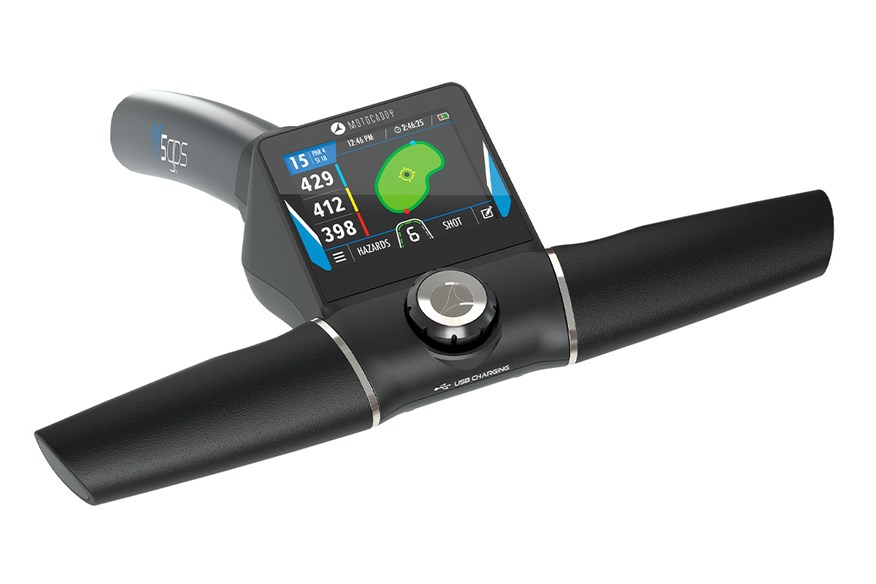
The accessibility of the technology on offer is hard to ignore, but less obvious when it comes to the performance benefit of trolleys is the luxury of carrying more without weight being an issue. I’ll often empty wet weather clothing, umbrellas, and even the odd club or two, taking a 50/50 gamble that I’m unlikely to need them. With a trolley, however, you can load up with the best golf accessories for every eventuality which may just save you a shot here and there. And most importantly, you can stock up with as many sandwiches as you want!
Function & Practicality
The golf trolley’s main selling point is undeniably the functionality and convenience that it brings to the party. That said, it can’t come at the expense of practicality otherwise it will end up becoming an expensive cobweb magnet in a dark corner of your garage. If patience isn’t your strongest asset, consider how easy the trolley is to fold down and haul in and out of your trunk. Many of the best electric trolleys feature a one or two-step folding mechanism that’s incredibly straightforward, but it’s worth bearing in mind nonetheless.
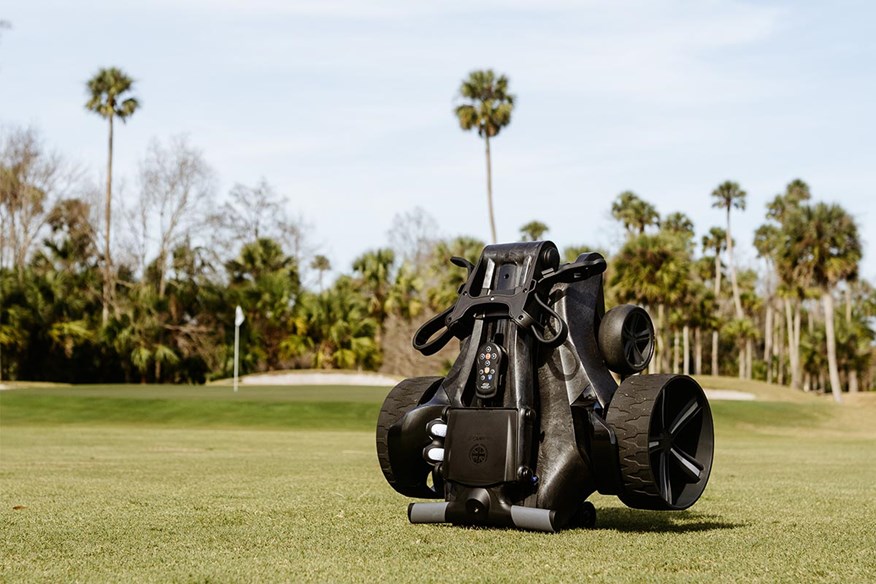
Then there’s the battery to consider. While lead-acid batteries are used in some trolleys to reduce costs, lithium batteries are far more popular as they can be charged in situ and when fully juiced up will last significantly longer than 18 holes. And although the trolley does all the heavy lifting during your round, you will still need to ensure you can lift it safely into your vehicle.
Thanks to continued technological developments, another consideration needs to be for your preferred operation mode. For the ultimate trolley experience that makes you feel like a pro, you can purchase trolleys that follow you around the course such as the Stewart Golf Q Follow, allowing you to focus fully on your game. Or if the thought of constantly looking back over your shoulder to make sure the dog is following, perhaps one controlled via remote such as the PowaKaddy RX1 is a better compromise or simply one you steer yourself to keep a tighter rein on things.
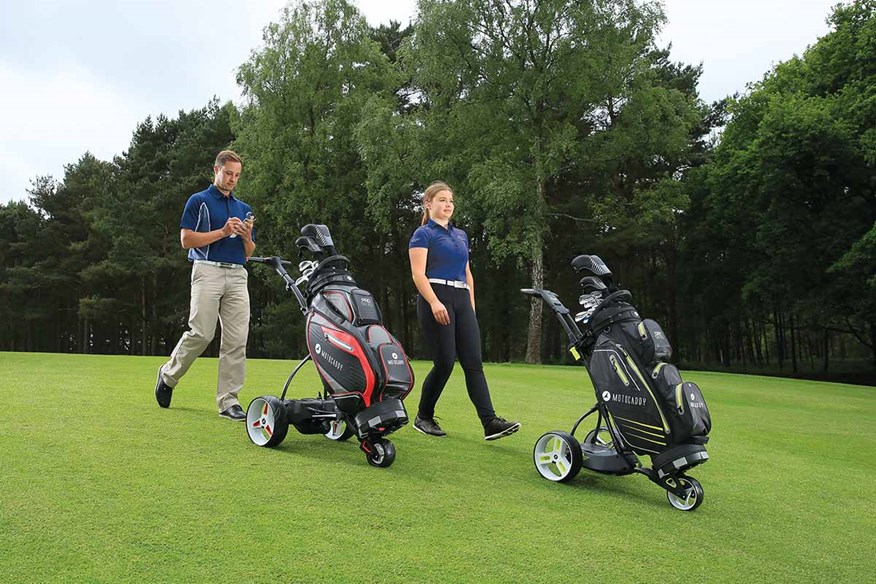
There is also no need to panic about having to chase your new trolley down an embankment. Most models incorporate inbuilt braking systems that slow the trolley on steep inclines which is ideal for those who regularly play undulating courses. And when going uphill, you can rest assured your clubs will remain upright thanks to all-terrain anti-tip wheels that prevent the trolley from falling back on itself. Multiple speed options enable you to select the pace you’re comfortable with either via a remote or on the trolley display itself. The latest follow models will even adjust to your walking pace, stopping when you do.
The engineering behind the best golf trolleys is outstanding, with powerhouse brands such as Motocaddy, Powakaddy, and Stewart pushing the boundaries of performance and convenience so golfers can focus purely on their swing. When it comes to function, there’s no doubt that there are some huge wins to be had. As for practicality, you’ll have to be the judge when it comes to ease of use and portability constraints as this is highly individualized.
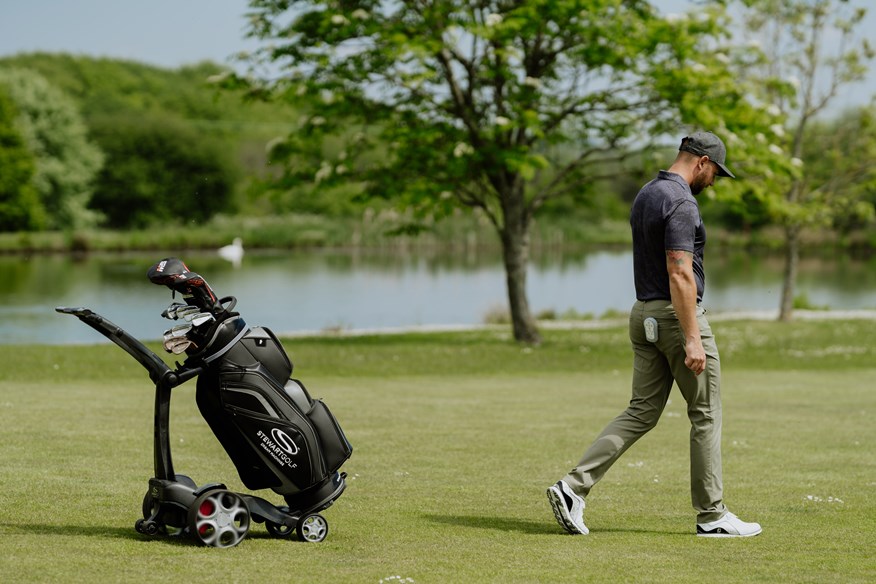
Cost
Now to cost, and while being subjective due to all having different budgets and ideas of value for money, electric golf trolleys are unlikely to be considered cheap in many people’s books, and therefore weighing up the investment is important. The technology and functionality packed into the very latest electric trolleys will set you back north of $1800/£1500 with the entry-level electric models coming in at around $600/£500. For those wanting to take tentative footsteps into the market with a push model, you can expect to pay around £200/$250.
As you can see, there is a huge range of price points so considering how much you play and your exact requirements is quite important. For example, if you love the accuracy provided by the best golf rangefinders, then do you need a trolley to have GPS functionality?
Another overlooked potential cost is having to factor in for a new golf bag if you find your trolley of choice isn’t overly receptive to your trusty stand bag. While you may get away with it, we’d always recommend buying a bag from the same brand that makes your trolley because it will have been designed to perfectly fit. Some brands, like Motocaddy, make hybrid bags that can be used as stand bags. Ideal if you travel overseas for golf or forget to charge the battery. You can find plenty of inspiration in our guide to the best golf cart bags.

A final important note when it comes to cost is warranty. Most of the major brands offer decent protection against faults that may arise not through your own doing. Just make sure you ask or research the warranty and its conditions before making your purchase as often the trolley frame and battery will have separate warranties.
Final verdict: To cart or not to cart?
Hopefully, by now you’re edging closer to making a decision one way or another. In summary, enjoyment is always the primary aim for those of us not teeing it up on the PGA Tour, and therefore if a trolley is likely to enhance your golfing experience then perhaps it’s time to bite the bullet. There is some evidence to suggest the ‘exercise of golf’ is in the walk itself, so those of you (like me) who are adamant they are getting a better workout by carrying may want to reel in your expectations. And if you are nursing an injury or feel that lightening the load may allow you to recover quicker and get out on the course more often, then ditching the straps could be a no-brainer.
When it comes to performance and functionality benefits such as in-built GPS, course information, storage capability, and hassle-free walking; the pros on offer from the best models definitely outweigh the practicality inconveniences of folding mechanisms, portability, and battery charging. You just need to decide which factors are non-negotiable.
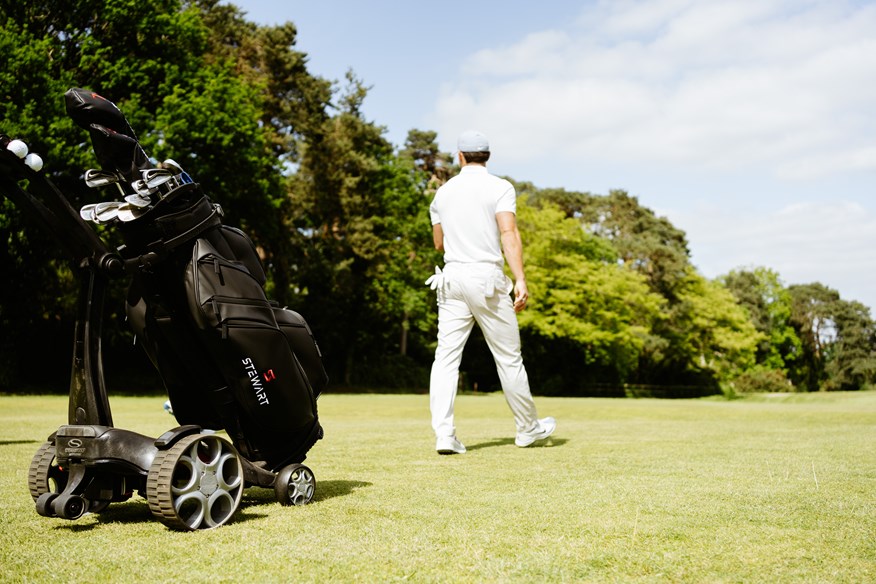
One suggestion I’m considering is dipping my toes in the water with a lower-end-of-the-market electric model that’s a few years into its product cycle to save breaking the bank and see how I get on. I like using a rangefinder so don’t feel I need to splurge on an all-singing and dancing GPS display just yet. I do like the idea though of a motorized trike for weekend competitions to help keep me fresh should my scorecard ever threaten to break 80. Maybe I can top up my fairway credibility with a pencil bag and a half set of clubs for nine holes on a summer evening so my shoulders don’t feel left out.
SUBSCRIBE TO TODAY’S GOLFER: Print and Digital access, discounts and rewards!


